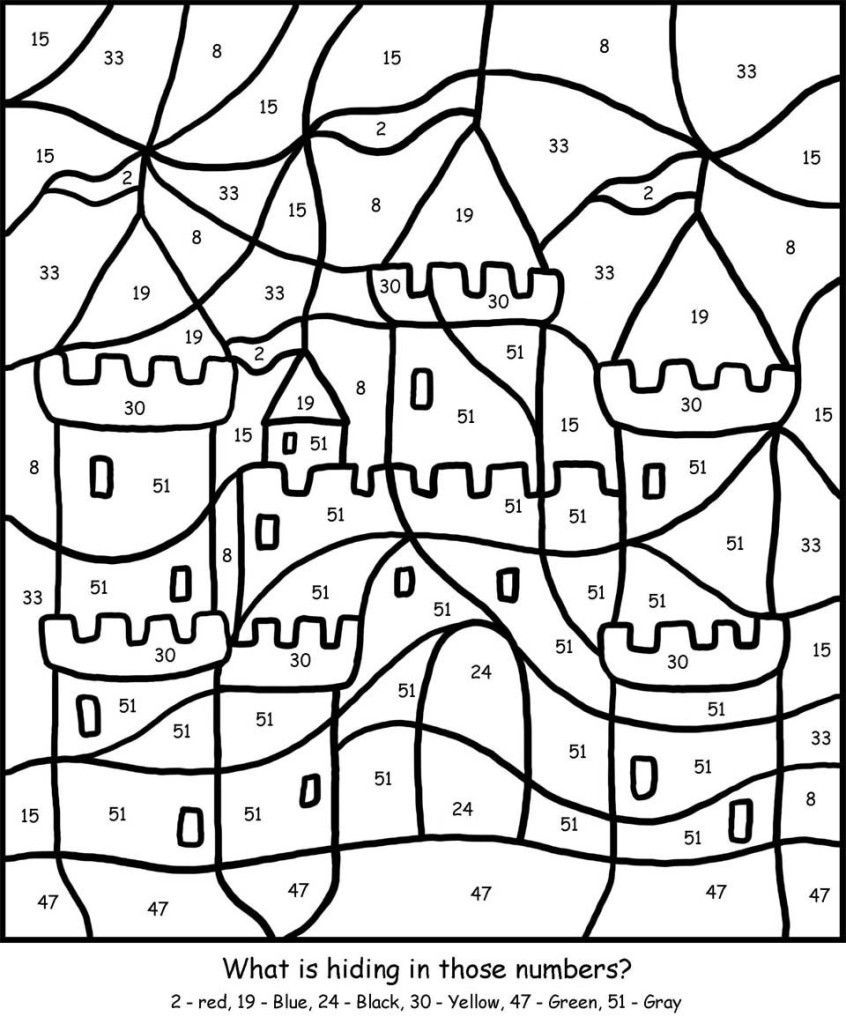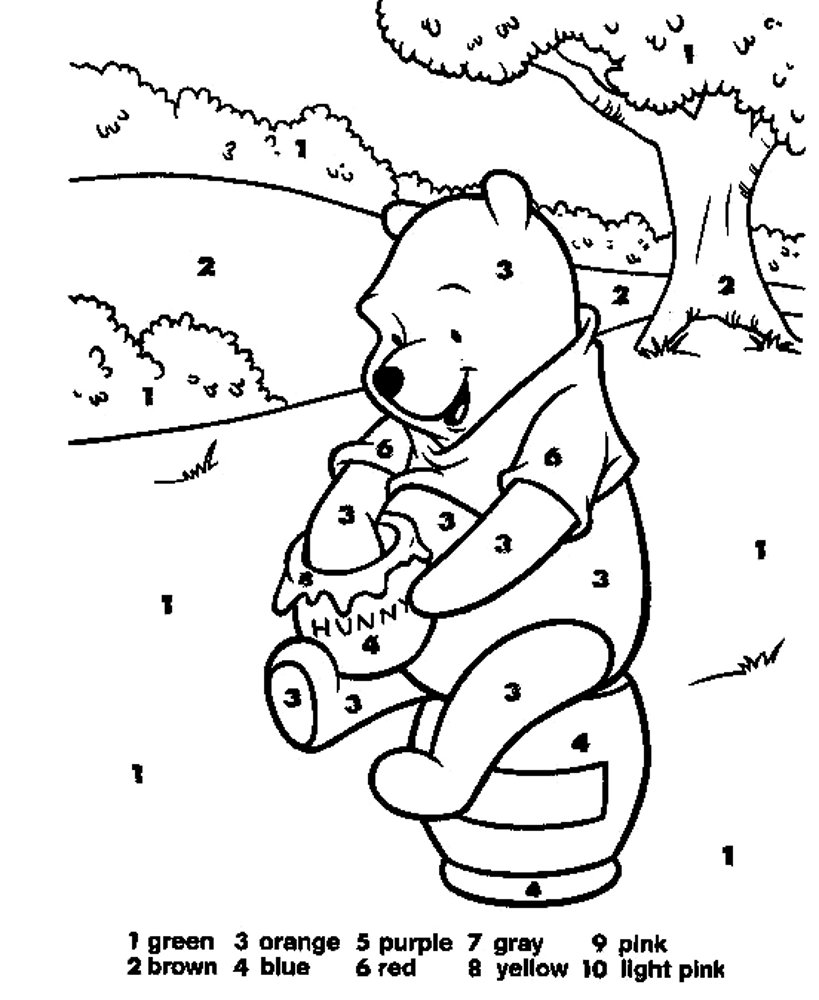Coloring Pages By Numbers For Kids
Crayons, of course. Scented markers. Black pencils, presharpened. And appearance books by the jillions.

Why do bodies like appearance so much? For grown-ups, I can absolutely get the homesickness — and the simple amusement of creating something.
But actuality at NPR Ed, we're all about kids and learning. And so, as parents arch to the abundance this summer with their back-to-school lists, we anticipation this catechism was account a austere look:
Do appearance books accept any educational value? Do they annihilate adroitness like a bug or, as some sites suggest, advance the development of accomplished motor skills?
I've apparent my babe accompany home worksheets from elementary school, allurement her to blush in this or that account afterwards answering a algebraic or chat problem. And, I've wondered as I watched her complete these assignments, "Isn't this busywork?"
I've consistently anticipation appearance books are, educationally speaking, bad news. That "staying in the lines" isn't absolutely the affectionate of absolute and artistic cerebration we appetite to nurture. Am I right?
So, as allotment of our Tools of the Trade series, here's a attending at kids and appearance books and whether they accept any abode in the classroom.
Opening arguments
Let's alpha in 1947 with a guy alleged Viktor Lowenfeld, and some alluring cerebration about what arts apprenticeship is about and what it's aggravating to accomplish.
Lowenfeld was a assistant at Penn State, and that year he appear a book alleged Artistic and Mental Growth.

"He's the great-great-grandfather of art education," explains Melody Milbrandt, a assistant of arts apprenticeship at Georgia State University and the 2015 National Art Educator of the Year.
I eventually tracked bottomward a archetype of the book. And appropriate there on Page 176 I begin a appealing acceptable acceptance of my aboriginal impression: "There is accepted acceding that appearance books too are adverse to children's artistic expression."
No big surprise, really. And yet, as I apprehend that, I begin myself asking: Afresh why is my kid bringing home these worksheets?
Indeed, two pages later, Lowenfeld is afraid by this, too: "Surprisingly enough, dittoed bedding are still occasionally handed out for youngsters to blush that may accept outlines of George Washington, a Thanksgiving turkey, a Halloween pumpkin."
Sound familiar?
Despite the fact, he adds, that "there is no affirmation that these agilely black balloons and kites absolutely advice to advance either cardinal concepts or account abilities."
What afraid me the most, though, was Lowenfeld's acumen about why appearance books are bad — at atomic in agreement of schools and learning.
Page 176: "The annex aloft addition else's outline of an article makes accouchement abundant beneath assured in their own agency of expression. They acutely cannot draw a cow as acceptable as the one in the appearance book."
He's basically allurement the question: Why blush in a banal account aback you can actualize your own?

Georgia State's Milbrandt explained this further: "When you attending at a appearance book, you say, 'Who's authoritative the decisions here?' The angel is already there, with little befalling for the adolescent to assemble meaning."
Coloring books, Lowenfeld wrote, can reinforce "stereotypes." There's a alluring analogy in his book that, well, illustrates this:
Give kids a bare area of cardboard and ask them to draw a bird. And you'll get all kinds of absurd images back. But accord them a appearance book — area birds are fatigued as two affiliated arcs, like a absolutely advanced and ample "V," and afresh ask them afresh to draw a bird on their own. Many kids will alpha to draw birds in that actual simple, "stereotyped" way.
Examples of children's assets of a bird in Viktor Lowenfeld's book Artistic and Mental Growth. LA Johnson/NPR adumbrate caption
Examples of children's assets of a bird in Viktor Lowenfeld's book Artistic and Mental Growth.
Milbrandt picks addition example: the sun. "In our culture, the sun is up in the corner, a chicken brawl with chicken rays. If [children] are seeing birds or the sun represented in a accurate way, they tend to accept those as symbols. Aloof like some children's abstract promotes stereotypes of princesses and bad guys."
And, she adds, art apprenticeship isn't aloof about teaching kids how to draw or acrylic or sculpt. "Part of what we animate accouchement to do through art is to assemble acceptation and amalgamate their understandings of the world. To appoint at a added level."
Or, to put it in appearance book terms: Don't break in the lines. Actualize your own lines.
But wait. I admired appearance aback I was a kid. Isn't appearance a fun affair that parents and kids can do together? What about those accomplished motor skills?

"If the ambition is for the adolescent to advance accomplished motor abilities and blush central the line, they may get achievement by accomplishing that correctly," Milbrandt says.
But, she adds, you accept to accomplish an important acumen here: What is educational vs. what is recreational.
Recreationally, she explains, "I anticipate there is some amount in appearance books — if parents are sitting and coloring, it's an befalling to talk. But at the aforementioned time, couldn't parents be sitting and cartoon with the child, or painting and creating an artwork?"
That would accomplish the aforementioned goals: developing motor skills, accepting fun, bonding ... but in a abundant added artistic way. In bread-and-butter terms, Milbrandt angle appearance in agreement of befalling costs: "It's not that it's bad, but there are added things you could do that would be better."
For art teachers, the bulletin is clear: Step abroad from the appearance book.
"We charge to advise accouchement to bless aberration rather than bless conformity," Milbrandt says.
And what about those teachers, sending home worksheets with the kites and balloons to blush in? Let's let Lowenfeld — autograph 71 years ago — accept the aftermost word:
"Although no one will accept it, one of the capital affidavit for application these workbooks may able-bodied be that they accord the classroom abecedary a adventitious to accept some rest."
A antecedent adaptation of this adventure was appear in July 2016.


